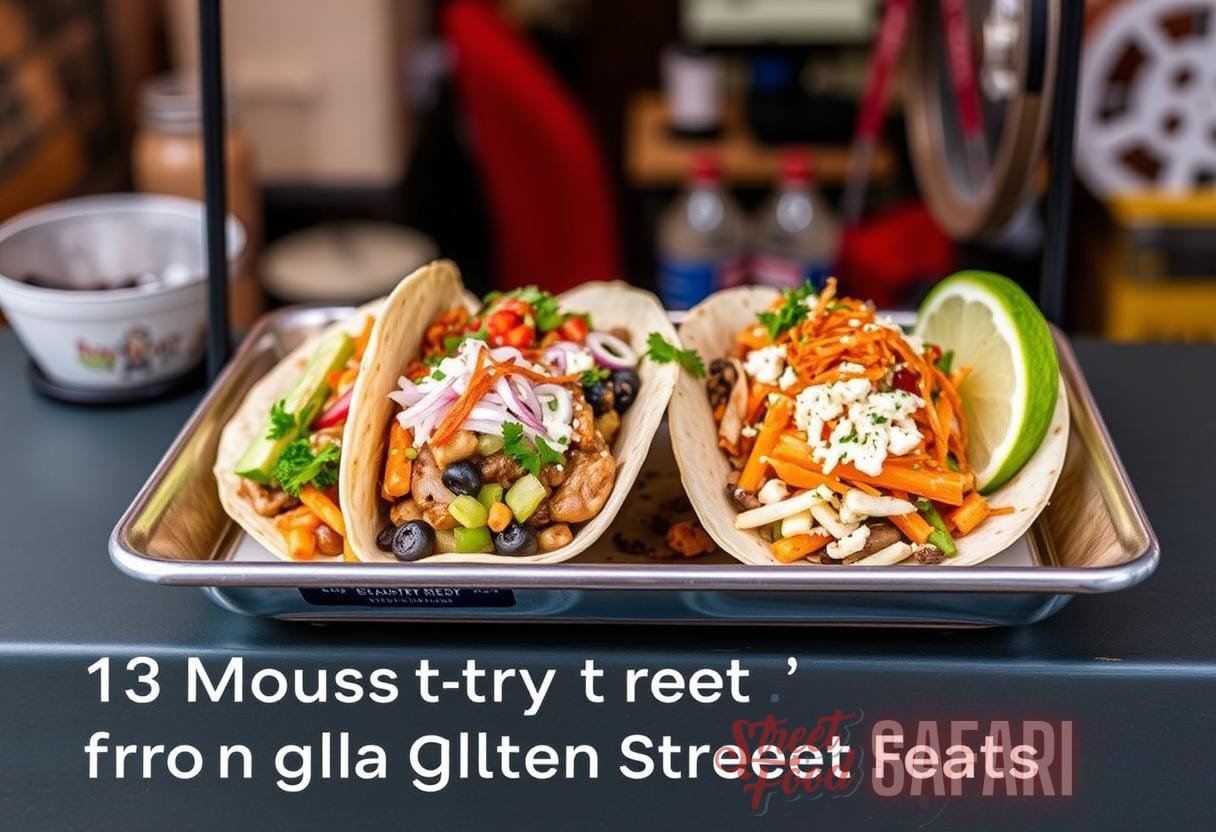Street eats are a culinary phenomenon that has captivated people around the world for centuries. Whether it’s a classic hot dog from a street vendor in New York City or a spicy kebab from a bustling bazaar in Istanbul, street eats have a special place in our hearts and stomachs. But what exactly makes these humble, on-the-go dishes so irresistible?
In this article, we will uncover the art and science of street eats, exploring the intersection of culinary technique and cultural significance. From the sizzling grills of roadside barbecues to the tantalizing aroma of freshly-fried treats, we will delve into the techniques that make street eats so satisfying. We will also unravel the scientific principles behind the flavor development in these dishes and shed light on the nutritional aspects to help you make informed choices.
The Art of Street EatsStreet eats are not just about a quick bite to eat; they are about experiencing a unique blend of flavors and techniques that have been passed down through generations. Let’s take a closer look at some of the culinary techniques that are at the heart of street eats around the world.
Exploring Culinary Techniques Grilling and Barbecuing: Grilling over an open flame or on a hot grill is a quintessential street food technique that imparts smoky flavors and crispy exteriors to ingredients. From juicy skewers of meat to charred vegetables, grilling adds depth and complexity to street eats. Frying and Deep-Frying: Whether it’s crispy fried chicken or fluffy churros, frying is another common technique used in street eats. The hot oil creates a golden crust and a satisfying crunch, while also imparting rich flavors to the food. Steaming and Boiling: Steaming and boiling are techniques often used in street eats that require gentle cooking. From delicate dumplings to hearty noodle soups, these methods help retain moisture and preserve the natural flavors of the ingredients. Roasting and Baking: Street eats also include dishes that are slow-roasted or baked to perfection. Think of succulent roasted meats or warm, flaky pastries – these are the result of skilled culinary techniques that create tender textures and intense flavors. The Significance of Ingredients
One of the defining characteristics of street eats is the use of fresh, local ingredients that reflect the culinary traditions of a particular region. Here are some key factors that contribute to the significance of ingredients in street eats:
Local Produce: Street eats often rely on locally sourced produce, ensuring that the flavors are authentic and the ingredients are at their peak freshness. From ripe tomatoes to fragrant herbs, these regional ingredients bring a unique touch to street dishes. Traditional Spices and Seasonings: A dash of spice can transform a simple street snack into a culinary masterpiece. Street eats often incorporate traditional spices and seasonings that are symbolic of the culture and history of a particular region. Cultural Influences on Street Eats: Street eats are heavily influenced by the cultural diversity of a place. As people move and settle in new locations, they bring their culinary traditions with them. This fusion of flavors and techniques creates a rich tapestry of street eats that celebrate cultural diversity. The Science of Street EatsWhile street eats may seem like a purely instinctive form of cooking, there is actually a scientific side to it as well. From food safety and hygiene considerations to flavor development and nutritional aspects, let’s delve into the science behind street eats.
Food Safety and HygieneStreet eats often involve cooking in open air environments, which presents certain challenges in terms of food safety and hygiene. Here are some key considerations:
Proper Handling and Storage of Ingredients: Street vendors must ensure that the ingredients they use are stored and handled in a way that minimizes the risk of contamination. This includes practices such as proper refrigeration, separation of raw and cooked foods, and regular cleaning of utensils and cooking surfaces. Safe Cooking Temperatures: One of the important aspects of food safety is ensuring that street eats are cooked to safe temperatures. This helps kill harmful bacteria and ensures that the food is safe to consume. Vendors must be aware of the recommended cooking temperatures for different ingredients and ensure that they are met. Public Health Regulations: Street food vendors are often subject to regulations and inspections by health authorities. These regulations aim to ensure that proper food safety practices are followed, including requirements for licensing, regular inspections, and adherence to hygiene standards. Flavor DevelopmentThe irresistible flavors of street eats are not just the result of chance; they are the product of scientific processes that take place during cooking. Here are some key aspects of flavor development in street eats:

While street eats may not always be associated with healthy eating, there are certain nutritional considerations to keep in mind:
Balance of Macronutrients: Street eats often feature a combination of carbohydrates, proteins, and fats. A balanced meal should ideally include all three macronutrients to provide sustained energy and satiety. For example, a meat-based street skewer served with a side of grilled vegetables and a small portion of carbohydrate-rich rice can provide a well-rounded meal. Nutritional Value of Street Eats: Street eats can offer a range of important vitamins, minerals, and other beneficial compounds. For example, dishes that incorporate fresh vegetables can be a good source of fiber, antioxidants, and vitamins. However, it’s essential to consider the cooking methods and ingredients used, as some street eats may be higher in unhealthy fats, sodium, or sugar. Healthier Alternatives: With growing awareness of health and nutrition, street vendors are increasingly offering healthier alternatives. These may include grilled or steamed options, lighter sauces, or whole grain substitutes. It’s worth exploring the street food scene in your area to find options that suit your dietary needs. Unique Street Eats from Around the WorldNo exploration of street eats would be complete without a taste of some iconic dishes from around the world. Here are just a few examples of unique street eats and the cities they call home:
Bangkok, Thailand: Pad Thai: Pad Thai is a popular Thai street food dish that combines stir-fried noodles with shrimp, tofu, eggs, and a tangy sauce. It is often garnished with crushed peanuts, fresh lime, and a sprinkle of chili flakes. Mexico City, Mexico: Tacos al Pastor: Tacos al Pastor is a classic street food from Mexico City. It features marinated pork that is traditionally cooked on a vertical spit, similar to the shawarma. The meat is thinly sliced and served in a warm tortilla, topped with pineapple, onions, and cilantro. Mumbai, India: Pav Bhaji: Pav Bhaji is a beloved street food dish from Mumbai, India. It consists of a flavorful vegetable curry made with potatoes, tomatoes, peas, and spices. The curry is served with buttered buns, known as pav, which are toasted on the griddle and served alongside the curry. Istanbul, Turkey: Balık Ekmek: Balık Ekmek, or fish sandwich, is a popular street food in Istanbul. It features grilled or fried fish, such as mackerel or sea bass, served in a crusty bread roll with salad and a squeeze of lemon. It is a delicious and satisfying snack enjoyed along the shores of the Bosphorus. New York City, USA: Halal Cart Chicken and Rice: Halal Cart Chicken and Rice is a quintessential street food dish that has become an icon in New York City. It consists of flavorful spiced chicken served over a bed of fragrant rice, accompanied by a tangy white sauce and a spicy hot sauce. ConclusionStreet eats expose us to a world of flavors, techniques, and cultures all wrapped up in a convenient and appetizing package. From the art of grilling to the science of flavor development, these humble dishes have a rich history and an enduring appeal.
By exploring the techniques and ingredients behind street eats, we gain a deeper understanding of the culinary traditions and cultural significance that make these dishes so special. So next time you’re strolling down a bustling street, don’t hesitate to sample a local street eat and uncover the hidden stories and flavors that await you.



